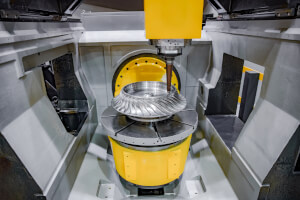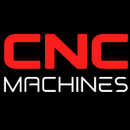How Domestic CNC Machining Accelerates the Development Cycle

How Domestic CNC Machining Accelerates the Development Cycle
Initial Prototype Runs
With CNC milling and turning, businesses can quickly fabricate one-off or small-batch components. This expedites the prototyping phase and allows for swift design tweaks within hours or days, not weeks, thanks to close collaboration.
Design Validation & Feedback
Design validation is crucial to inspect form, fit, and function. Iterative updates can be made with real-time input from machine operators and engineers, ensuring the final product meets all specifications.
Pilot Production
Mini production runs help validate manufacturing workflows, packaging, and supply chain capabilities. Fine-tuning CNC programming optimizes cycle times and minimizes scrap, preparing designs for larger scale production.
Full-Scale Manufacturing
As production scales to hundreds or thousands of parts, minimal downtime is achieved through on-demand reorders. Short shipping distances facilitate quick machining of repeat designs using stored CNC toolpaths.
Industries Benefiting from Localized CNC Machining
- Medical Devices & Instruments: Precise tolerances, real-time updates, and straightforward regulatory documentation are simpler with a local machining partner.
- Aerospace & Defense: Managing complex geometries and ITAR compliance benefits from domestic oversight and specialized expertise.
- Automotive & Motorsport: Quick adaptation to competitive environments is crucial, necessitating short lead times for car parts or race components.
- Industrial Equipment: On-demand replacement parts reduce downtime for factories or machinery operators.
Tips for Choosing the Right Domestic CNC Partner
- Check Credentials: Verify the partner's certifications (ISO, AS9100, ITAR) and references from past clients.
- Tour Facilities: Evaluate equipment capabilities, cleanliness, and in-house finishing processes at their site.
- Evaluate Communication Tools: Ensure they offer cloud-based file sharing, responsive emails, and dedicated project managers.
- Start Small: Begin with a prototype order to assess workmanship, lead times, and synergy before committing to larger production volumes.
Conclusion
Transitioning seamlessly from prototyping to full production offers a considerable competitive advantage, especially in fast-evolving sectors. Leveraging domestic CNC machining not only speeds up development cycles but also reinforces quality control, reduces supply chain vulnerabilities, and fosters a collaborative engineering environment. The outcome? On-time product launches, satisfied customers, and resilience against global disruptions. For companies seeking to accelerate development cycles without compromising standards, partnering with a U.S.-based CNC shop is a direct path to success.


